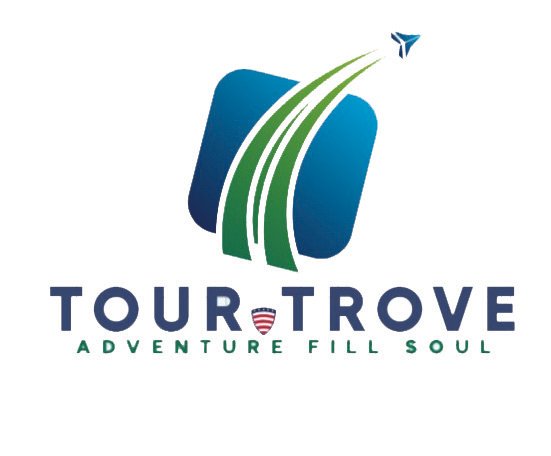** The allure of budget travel taps into the adventurous spirit inside all of us, beckoning us to explore without draining our wallets. It’s about painting the vast canvas of the States with the rich colors of unforgettable experiences, without the hefty price tag. “Setting the stage for an affordable adventure” starts with a mindset shift—prioritizing enriching experiences over luxury and understanding that the true value lies in the memories we make, not the dollars we spend. This guide is your roadmap to **navigating a budget-friendly journey across the U.S.** with tips and tricks on how to make the most of your travels by spending wisely, not sparingly. Let’s dive into mastering the art of thrifty trails!
#1. Planning and Preparation: The Foundation of a Shoestring Adventure

## Setting Realistic Expectations —
Understanding the true cost of travel in the U.S. is the first step. While it’s a diverse country offering a range of costs depending on the region, knowing what to expect helps manage your budget effectively. It’s about finding the balance—**prioritizing experiences over extravagance**.
## Budget Planning and Money Management —
Creating a detailed budget entails more than just saving money before your trip. It involves being strategic about how you spend each dollar. **Tips for saving before and during your trip** include setting aside a portion of your income for travel and keeping an eye out for deals on activities and accommodations.
## Research and Resource Utilization —
In the digital age, **leveraging free planning resources** like blogs, government tourism sites, and travel forums can unveil a plethora of information on discounts and travel deals, helping you cut costs without cutting experiences.
#2. Travel and Transportation: Navigating the U.S. Affordably

## Choosing Your Mode of Transportation Wisely
Comparing costs across road trips, flights, and public transport can reveal surprisingly affordable options. **Hitchhiking and ridesharing**, though not for everyone, represent viable ways to save, especially if you’re open to a bit of adventure.
## Maximizing Rewards and Points for Travel
Diving into the world of “travel hacking” can seem daunting, but it’s essentially about making the travel rewards and points systems work for you. From opening a travel rewards credit card to joining frequent flyer programs, the opportunities to save are endless.
## Off-Peak Travel: Timing is Everything
The benefits of traveling during off-peak seasons include not only financial savings but also a more authentic experience devoid of crowds. This is when you’ll find the best deals on flights, accommodations, and even attractions.
#3. Accommodation: Sleeping Soundly on a Budget

## Alternative Lodging Options
Thinking outside the traditional hotel box—hostels, couchsurfing, and camping—can lead to significant savings. Each option offers a unique experience, from meeting fellow travelers in hostels to enjoying the great outdoors while camping.
## Booking Strategies
Deciding between *last-minute deals vs. advanced booking* can depend on your flexibility. Utilizing comparison websites and apps is key to finding the best rates, regardless of when you book.
## Staying with Locals
There’s no better way to experience a place than through the eyes of someone who lives there. Platforms like Couchsurfing not only offer free accommodation but also invaluable local insight. However, **safety considerations** should always be paramount.
#4. Dining and Eating Out: Savoring the Flavor Economically

## Self-Catering and Grocery Shopping
Understanding “where and what to buy” for budget grocery shopping can transform your dining experience. Meal prepping isn’t just cost-effective; it’s also an opportunity to picnic in some of the country’s most picturesque spots.
## Discovering Affordable Eateries
Local, budget-friendly restaurants offer the authentic flavors of a region without the high price tag. It’s all about doing a little research and asking locals for their top picks.
## Cultural Experiences Through
Food Food festivals and markets are not just about tasting the local cuisine; they’re an immersion into the culture. And don’t forget about **free tastings and street food**, which can be both delicious and budget-friendly.
#5. Entertainment and Activities: Enjoying the U.S. Without Breaking the Bank

## Utilizing Free and Discounted Attractions
Many museums, parks, and historical sites offer free admission days or discounted tickets, providing rich experiences without a hefty price tag.
## Outdoor Adventures on a Dime
The U.S. is home to an array of **national parks and nature reserves** that offer countless free or low-cost outdoor activities, from hiking to beach days.
## City Passes and Tourist Cards These can offer great value but require a bit of math to ensure they’re worth the investment. If you plan on hitting many attractions, they can save you a bundle.
## Exploring the U.S. on a budget doesn’t mean missing out; it means traveling smarter, with a keen eye for value and an open heart for adventure. This guide serves as a beacon for those yearning to discover the beauty of the United States, proving that with a little planning, flexibility, and creativity, **the richness of experiences gathered along the way far outweighs the cost**. So, pack your bags, set your budget, and embark on a journey that promises to be as enriching as it is economical. Adventure awaits on the thrifty trails!
## Frequently Asked Questions (FAQs) >
1. How can I ensure my money is safe while traveling on a budget?
> Keep your money in multiple places, use a travel money card, and always have a small cash reserve.
2.Are there any apps that can help me save money while traveling in the U.S.?
> Yes, apps for budget tracking, discount finding, and free attraction locators are plentiful. Popular choices include Mint for budgeting and Groupon for discounts.
3.What should I do if I encounter unexpected costs?
> Having a contingency fund is crucial for unforeseen expenses. Try to allocate a portion of your budget for emergencies.
4.Is it safe to travel alone on a shoestring budget in the U.S.?
> Yes, with proper planning and awareness of your surroundings. Always inform someone of your travel plans and stay connected.
5.How do I manage data and communication costs in the U.S.?
> Look into sim cards for travelers or plans specifically designed for tourists. Utilizing free Wi-Fi in cafes, libraries, and public spaces can also save you money
